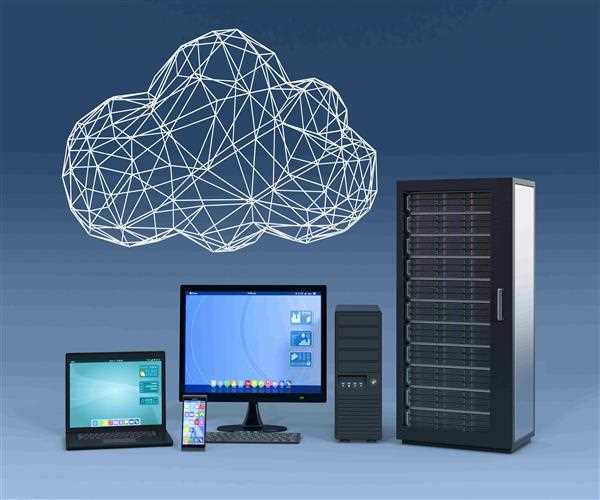Every business has this one business-critical desktop-based application that is crucial for several workflows in the office. Many of your employees' check-in, open this application and use it multiple times throughout the day.
Moving this desktop application to the cloud can help you streamline application performance, storage, access, and feasibility.
Till 2019, 94% of organizations were already using the cloud to some extent.
Do you also want to host your applications on the cloud and enjoy seamless functioning after that?
This post will discuss deploying your desktop application on a Cloud VDI or a cloud server.
How Can You Deploy Desktop Application On The Cloud?
Before we move straight to the discussion, let’s explore what on the cloud means?
On the cloud means using an application, your data, or desktop from a remote server through an internet connection. This server is set up, maintained, and upgraded by a Cloud Service Provider (CSP). This CSP creates and manages multiple data centers (Cloud servers) at different geographical locations. Due to an extensive geographically isolated network, the cloud can offer unhindered access to data.
Now, how can you deploy your desktop application on the cloud?
To deploy your desktop application, such as QuickBooks on the cloud, you have two options:
- Cloud VDI
- Cloud application hosting
Cloud VDI or Cloud Desktops are hosting your entire desktop on the cloud. This virtualizes your entire desktop and offers access via a network.
Cloud application hosting only moves one particular application on the cloud; the QuickBooks Enterprise application is one example. You can host this app on the cloud and access it remotely via an internet connection.
Which Solution Is Better For You?
Both hosted desktops and applications are beneficial for different types of organizations. However, we have compared the distinct features of both solutions to help you understand better.
Cloud Desktop
Cloud VDI solutions host your entire desktop on the cloud. This means your OS and resources are now residing in a remote data center. To use this type of cloud desktop, you need to open your desktop on a hardware device, a smartphone, laptop, PC, or tablet. In this device, the virtual desktop interface will work similarly to physical office desktops.
Some differentiating factors may make hosted desktops an optimum choice for your organization:
- Cloud VDI is secure. When you are opening this virtual cloud desktop on any device, that end device is not storing data of the desktop. So, if an endpoint is lost, hacked, or stolen, your desktop and its applications are safe.
- Since the cloud is secure, this security architecture is extended to your entire IT structure. Your desktops are secured via different controls, such as Intrusion Detection and Prevention, encryption, antivirus, antimalware, etc.
- You can use any application or data on your desktop anywhere, anytime. There are no mobility restrictions as such.
Cloud Application Hosting
Cloud application hosting is different from cloud desktop, as it hosts just one application. If you are hosting QuickBooks Enterprise on the cloud, you will only get remote access to this application.
Similarly, every cloud benefit is extended to this application. This means your QuickBooks Enterprise is secured, encrypted, backed up, and fully managed – not your entire It infrastructure. So, if you need to use another application remotely, your business needs to either host that or find another way to ensure remote accessibility.
Benefits
Some expected benefits of cloud desktop and cloud-hosted applications are:
Flexibility
With the cloud, you can flexibly use your applications and data. This means everything is on the cloud, and your employees can virtually access data and apps from any location. For example, while on vacation, an employee can track details of project progress to keep updated.
Fortunately, you can also set up a remote workforce using both solutions. Even if you are hosting one application on the cloud, then you can allow exclusive secure cloud access to this application.
Cost-Effectiveness
Cloud desktops and applications are cost-effective. The reason behind this is the managed solution offered by a CSP.
The entire hardware, maintenance, and upgrade setup are at the expense of a CSP. There are no capital expenses, hardware expenses, maintenance hassle, or upgrade costs for your organization.
You are using a service model that is purchased as a subscription.
You can scale when you have to scale your resources, such as storage, virtual desktops, RAM, etc. If you have scaled during the peak season and this demand has subsided, you can descale anytime. This further contributes to the lower cost of the cloud service.
Data Encryption
Cloud desktops and applications are encrypted using TLS 1.3 and 256-bit encryption. This means your data in transmission, as well as your resting data, is protected from theft. If a hacker interrupts the network or communication during the transmission, they won't get any details out of these encrypted packages.
Backup Support
Your CSP automates the backup of your application or desktop. This backs up your data to different data centers. During a disaster or mishappening, you can recover your data and applications and start working as soon as possible.
If a disaster-impacted one data center, another would help you recover your data. Similarly, if one of your employees deletes a sensitive file accidentally, you can recover it.
Collaboration
More than one user can collaborate on the same file on the cloud. This is true for both cloud desktops and hosted applications.
Both users can modify the file and save it in real-time. There’s no need to transmit data or risk creating different versions of the file.
Collaborating in this manner also imparts employee productivity – employees can achieve more in less time.
Conclusion
We have discussed two valuable methods to deploy your applications on the cloud. Depending on your organizational needs, select one way that seems more relevant and start its implementation. At this point, you may also want to research different CSPs to make the right decision.




Leave Comment